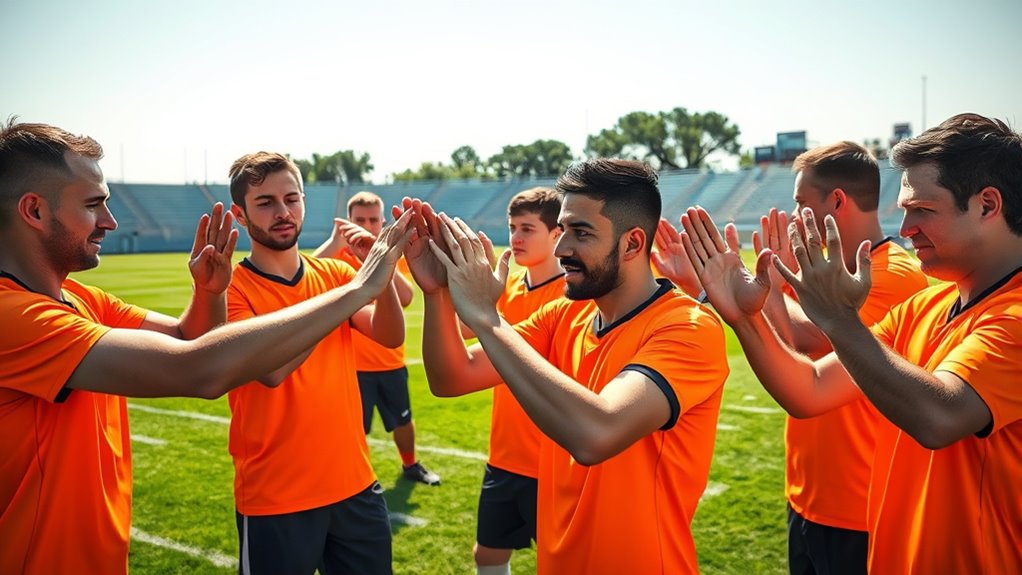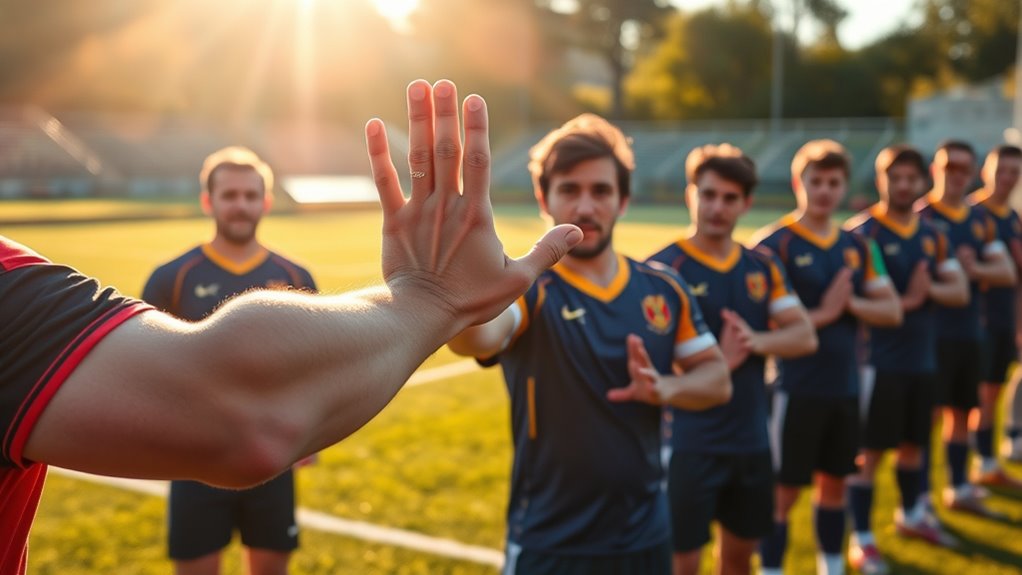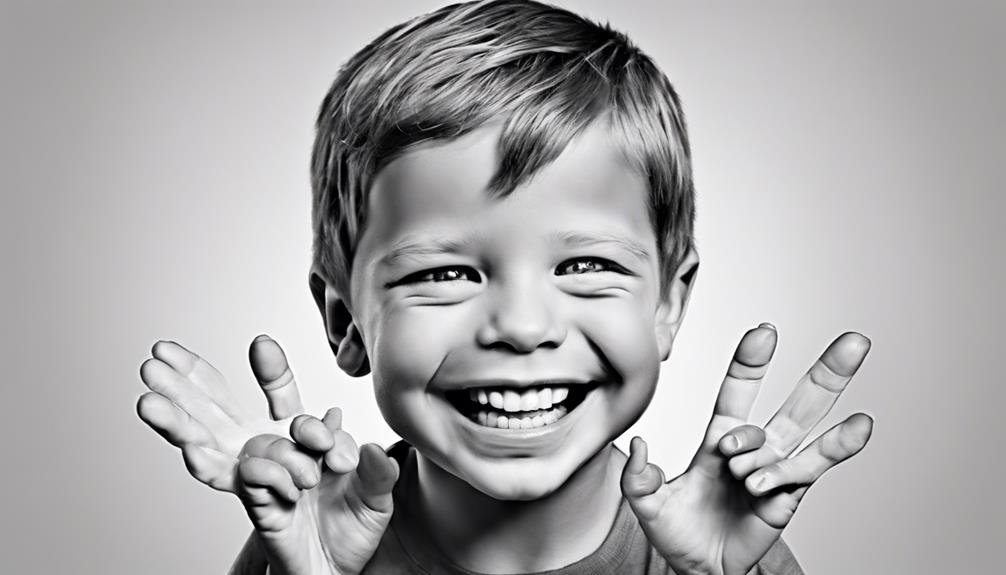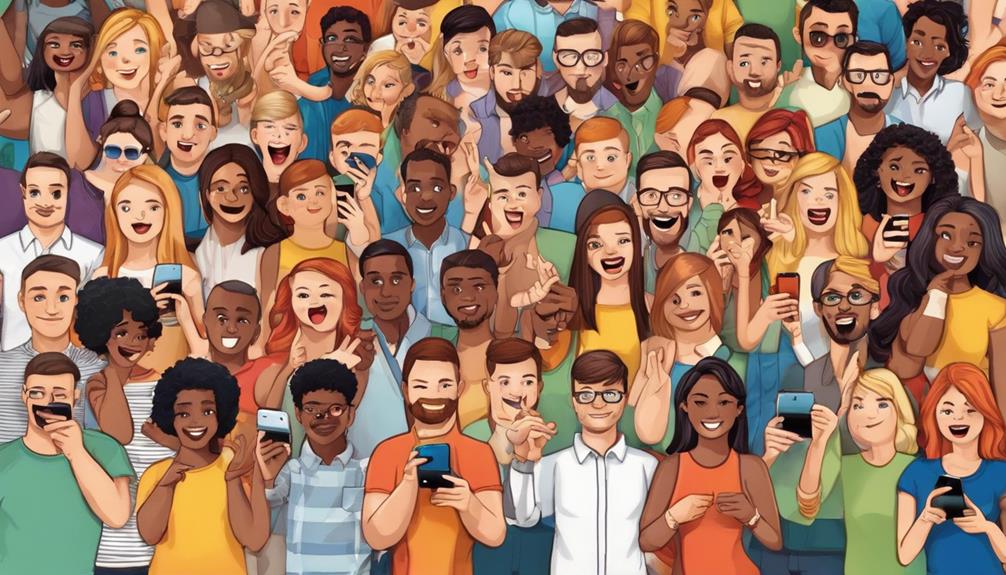Deaf athletes are transforming sports by using sign language on the field, breaking down communication barriers and fostering inclusivity. By developing shared visual signals and gestures, they enable quick and precise teamwork during fast-paced moments. This approach builds stronger team cohesion, promotes accessibility, and challenges traditional communication norms. Their efforts highlight how innovative, inclusive methods can reshape sports culture. Keep exploring to see how these inspiring changes are shaping the future of athletic competition.
Key Takeaways
- Deaf athletes use sign language to communicate quickly and effectively during gameplay, ensuring seamless coordination with teammates.
- Implementing visual signals and gestures enhances team responsiveness and strategic execution on the field.
- Practicing shared sign language systems fosters inclusivity and strengthens team cohesion among deaf and hearing players.
- Sign language integration challenges traditional communication methods, promoting accessibility and equal participation in sports.
- Embracing visual communication demonstrates sports’ commitment to diversity, resilience, and breaking down barriers for deaf athletes.

Deaf athletes are breaking down communication barriers on the field by using sign language to coordinate with their teammates. This innovative approach transforms how sports communication occurs, allowing players to stay connected during fast-paced moments and vital plays. When you’re on the field, clear communication is essential for effective team dynamics, and sign language offers a visual, immediate way to share information without relying on spoken words. This method helps guarantee everyone understands their roles, making the team more cohesive and responsive.
By integrating sign language into sports, deaf athletes demonstrate that communication isn’t limited to auditory signals. Instead, it becomes a dynamic visual exchange, which can be faster and more precise in certain situations. When you’re involved in a team that uses sign language, you learn to read subtle gestures and facial expressions, enhancing your ability to anticipate teammates’ actions. This heightened awareness strengthens team dynamics, fostering trust and synchronization. It also encourages teammates to develop non-verbal cues that can be used seamlessly during the game, reinforcing the importance of non-verbal communication in high-pressure moments.
Using sign language on the field requires intentional practice and adaptation from all team members. It’s not just about translating words but about developing a shared system that fits the sport’s rhythm. You might learn specific signs for common plays, defensive strategies, or alerts, which can be quickly communicated through swift hand signals. This shared language becomes an integral part of your team’s culture, promoting inclusivity and respect for different communication needs. It levels the playing field, allowing deaf athletes to fully participate and excel alongside their hearing counterparts.
Furthermore, incorporating sign language into sports emphasizes the importance of accessibility in athletic environments. It challenges traditional notions of communication and highlights the need for flexible, innovative solutions within team sports. As you witness or participate in teams that adopt sign language, you realize how this adaptation can serve as a model for broader inclusivity. It encourages coaches, players, and organizers to rethink how they facilitate communication, guaranteeing that deaf athletes are not left out but are active, engaged team members.
Ultimately, the use of sign language in sports doesn’t just help deaf athletes communicate; it transforms team dynamics. It fosters a more inclusive atmosphere where every player’s voice is heard, whether spoken or signed. Your team becomes stronger because everyone is connected, synchronized, and working toward the same goal. Breaking down communication barriers through sign language proves that sports are about unity, adaptability, and shared effort—values that resonate far beyond the game itself. Recognizing that technology and innovation can aid in communication accessibility reinforces the potential for continued progress in inclusive sports environments.
Frequently Asked Questions
How Do Deaf Athletes Communicate During Team Huddles?
During team huddles, you can use sign language strategies to effectively communicate. You might incorporate visual cues, gestures, or signals that everyone understands, ensuring clear peer communication techniques. By maintaining eye contact and using concise signs, you keep everyone engaged and informed. These methods allow deaf athletes to participate fully, fostering teamwork and understanding without relying on spoken words, making the huddle inclusive and efficient.
What Technology Assists Deaf Athletes During Live Games?
Imagine a game-changing secret weapon. Assistive devices like vibrating wearables and smart glasses help deaf athletes stay in sync during live games. Visual cues, such as LED displays or real-time captioning, provide vital information instantly. These innovative tools bridge communication gaps, ensuring you remain connected with your team. By enhancing awareness, they empower deaf athletes to perform confidently, breaking down barriers and redefining what’s possible on the field.
Are There Specific Sports More Inclusive for Deaf Athletes?
You might notice that some sports are more inclusive for deaf athletes, especially those that incorporate sign language for communication. Sports like basketball, volleyball, and soccer often adapt rules and provide visual cues to accommodate hearing impairment. These adaptations help deaf athletes participate fully, fostering a more inclusive environment. By emphasizing visual signals and sign language, these sports create opportunities for deaf athletes to excel and break barriers on the field.
How Do Coaches Adapt Training for Deaf Athletes?
Imagine a coach turning communication into a visual symphony — that’s how you adapt training for deaf athletes. You use sign language coaching and incorporate clear visual cues to guarantee understanding. By emphasizing gestures, demonstrations, and visual signals, you create an inclusive environment where deaf athletes thrive. This approach helps bridge gaps, making sure every athlete receives the support they need to succeed on and off the field.
What Challenges Do Deaf Athletes Face Outside of the Game?
You face challenges outside the game like communication barriers that make it hard to connect with coaches, teammates, and officials. Access to resources can also be limited, affecting your training, equipment, and support systems. These obstacles often lead to feelings of isolation and hinder your growth. Overcoming these issues requires increased awareness and better resources to guarantee you can thrive both on and off the field.
Conclusion
As you watch these deaf athletes communicate through signs, you witness a symphony of resilience and unity that breaks down barriers. Their gestures paint a vivid tapestry of determination, turning silence into a powerful voice on the field. You realize that their silent language isn’t just a method of communication—it’s a beacon illuminating the path toward inclusion and understanding. In their quiet strength, they remind us that barriers are meant to be broken, one sign at a time.











